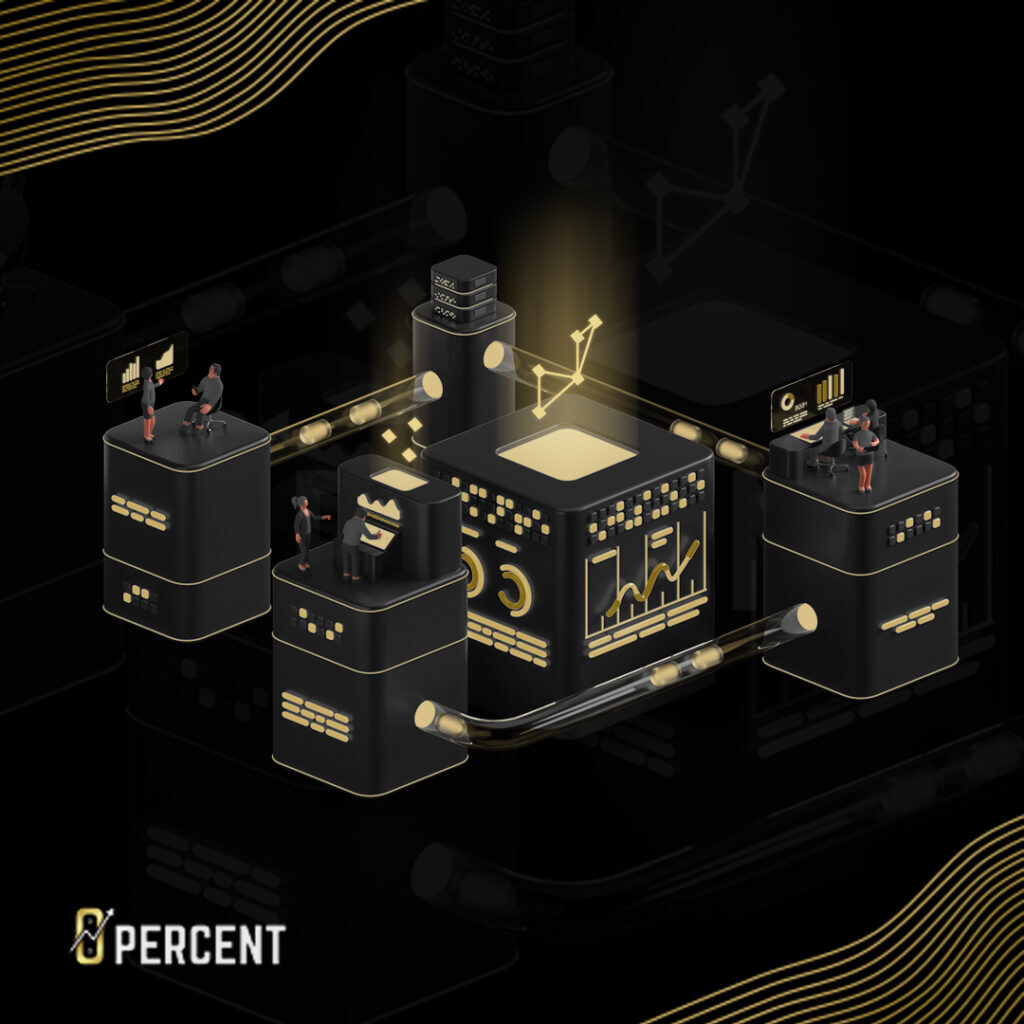
Jeff Sekinger
Jeff Sekinger Founder & CEO, 0 Percent Who is Jeff Sekinger? Visionary Trailblazer Sekinger has been in the financial industry for over a decade. Starting
Cryptocurrency mining is the process of generating and releasing new cryptocurrency and adding them to the blockchain. Crypto mining is a crucial aspect of the functionality of many cryptocurrencies, and allows the network to operate in a decentralized manner. It does this by allowing people from anywhere in the world to generate cryptocurrency, thus keeping the process decentralized. The process has many advantages both to the industry at large, as well as to individual miners, but also carries a host of challenges that will need to be addressed in order for the practice to continue without decline.

In order to mine for crypto, miners must complete very complex mathematical problems using specialized software and hardware. The more miners operating worldwide, the more difficult it is to generate crypto, and over time, as more crypto is generated, the mathematical problems become more complex, requiring more time and energy, as well as more advanced hardware and software in order to accomplish the task. When miners successfully solve a problem, they are rewarded with a certain amount of the cryptocurrency being mined — usually a small amount.
There are many types of software and hardware used in crypto mining, with some popular options being: Application Specific Integrated Circuits (ASICs), which are specialized chips designed specifically for the purpose of crypto mining; and Graphics Processing Units (GPUs) and Central Processing Units (CPUs).
The concept of crypto mining dates back to the creation of the first cryptocurrency, Bitcoin. Invented by the anonymous Satoshi Nakamoto, Bitcoin mining was initially relatively simple, and could be done using a regular personal computer. Over time and as the network grew, mining Bitcoin became an increasingly difficult and energy intensive task.
Today, crypto mining is a multi-billion dollar industry, with miners competing worldwide to solve complex mathematical problems in order to generate cryptocurrency. Although the process has become quite cumbersome, it remains an integral part of the functioning of cryptocurrency, and while Bitcoin is no longer the only cryptocurrency that can be mined, it remains the most popular by far. At present, several hundred thousand Bitcoins have been mined since Bitcoin’s inception.
Mining crypto is not without its challenges and risks. Arguably its greatest obstacle is energy consumption. Aside from the environmental impact, the financial cost of mining takes away a significant portion of the profits made from the actual mining.
Another primary risk is crypto volatility. Crypto is notoriously volatile, and mining becomes less profitable as the value of the cryptocurrency is lowered — though the energy consumption remains high.
A further challenge in the ever increasing difficulty of mining, as more and more people become involved in this space. As the number of miners increases, the challenge of mining proportionally increases.
Because of these challenges, miners are keen on using emerging tech to mitigate the costs and difficulties associated with crypto mining. Artificial Intelligence is increasingly being utilized to help optimize the performance of mining software and hardware, and the use of algorithms is increasingly being used to adjust the setting of possessing units in real time.
All in all, crypto mining remains strong and is an ever growing and evolving space that isn’t likely to end anytime soon.
At 0 Percent, we specialize in cryptocurrency mining through our Crypto Income Accelerator (CIA) program. With our CIA, we provide you with access to infrastructure and expertise in crypto mining to help you get started with mining your own cryptocurrency!

Jeff Sekinger Founder & CEO, 0 Percent Who is Jeff Sekinger? Visionary Trailblazer Sekinger has been in the financial industry for over a decade. Starting

Angel Alvarez Funding, 0 Percent Who is Angel Alvarez? From SpaceX to 0 Percent Angel is a remarkably well rounded individual who has had a

Abhay AnandProduct, 0 Percent Who is Abhay Anand? Title One Test Title Two Test Test
Sign up to receive news & updates!
Sign up to receive news & updates!